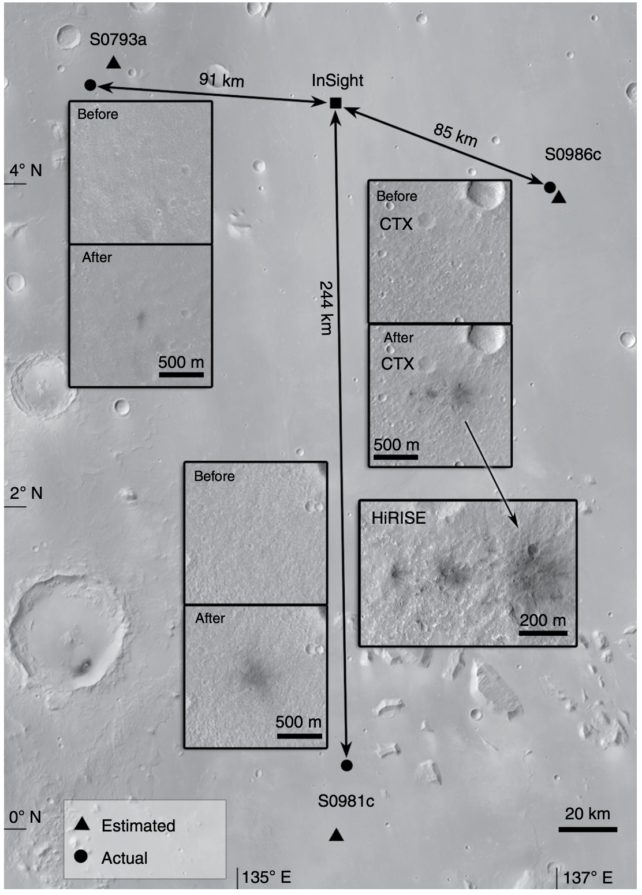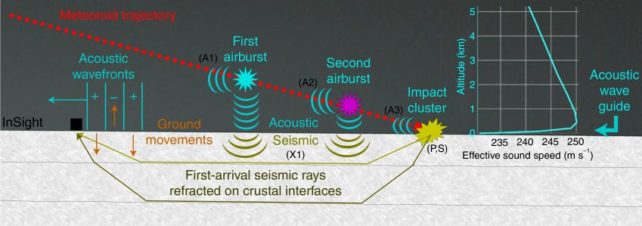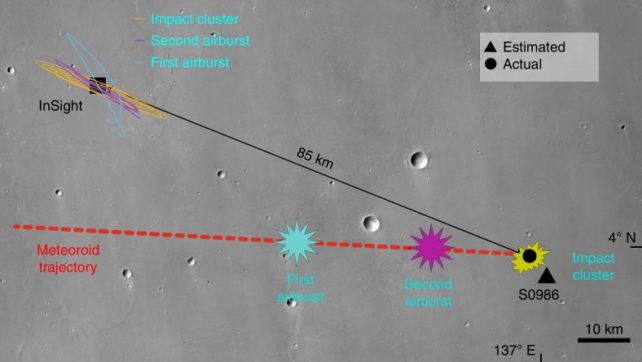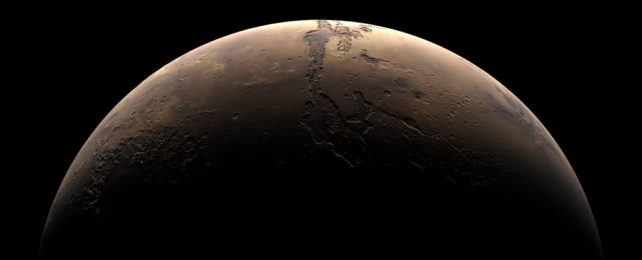An instrument designed to detect seismic activity on Mars has just revealed an incredibly cool new ability, detecting faint tremors from meteorites impacting the red planet.
By combining data collected from the NASA's Mars InSight lander with information from the Mars Reconnaissance Orbiter researchers have successfully linked those ground-shaking booms with freshly formed craters.
Not only does this help us understand the impact processes that continue to shape Martian geology, it demonstrates how collecting seismic data can reveal information beyond expected mission parameters. This may help inform future exploration of other worlds.
InSight has been a game-changer for the study of Mars. Since touching down in November 2018, it has shown us that Mars is way more geologically active than we thought, shivering and shaking with tremors and quakes.

Thanks to the seismometer built into the robotic lander, scientists have used the waves from these quakes to produce the first detailed map of the Martian interior. The sensitive device has even been used to capture the alien sounds of another world by detecting acoustic vibrations in the thin Martian atmosphere.
These capabilities mean that the lander is in a prime position to detect vibrations from another source: meteors exploding noisily in the Martian atmosphere moments before their debris impacts the surface as meteorites.
"A clear link between recorded seismic and acoustic waves and a given impact crater has never before been accomplished on another planet," writes a team led by astrophysicist Raphael Garcia of the University of Toulouse's National Higher French Institute of Aeronautics and Space in France.
"Seismic Experiment for Internal Structure (SEIS) and pressure sensors on the InSight lander provide a unique opportunity to relate Martian meteoroid entry in the atmosphere and ground impact processes to the mechanical waves they generate. We use InSight seismic data to estimate locations of new impact craters on Mars."

The entry of a large enough space rock into a planetary atmosphere is a somewhat disruptive event. First, it generates shock waves as it enters. As the meteor falls, it can explode mid-air; this is thought to happen as atmospheric gases seep into cracks in the rock, pressurizing it from within and causing it to go kaboom. The result? More shock waves. Then, if big enough pieces make it to the ground, the crash landing also causes a bunch of waves.
Theoretically, all of this shaking can be expected to decay into acoustic and seismic waves detectable by sensitive instrumentation. Before the mission even launched, Garcia and his colleagues suspected InSight was capable of detecting a meteor airburst, but what the team has been able to accomplish has exceeded that hope.
Using acoustic and seismic data from InSight, Garcia and his colleagues identified four separate impact events on Mars, all within 300 kilometers (186 miles) of the lander. These events took place on 27 May 2020; 18 February 2021; 31 August 2021; and 5 September 2021.

The arrival times of the acoustic and seismic waves at the lander then allowed the team to work out where the impacts struck; respectively, 286.5, 84, 267, and 86 kilometers from InSight. Images of these regions from NASA's Mars Reconnaissance Orbiter then revealed fresh impact scars on the Martian surface, verifying the team's calculations.
Meteorite impacts (and meteor airbursts) can have some interesting effects on a planet. Scientists think meteors were responsible for delivering key ingredients that led to the emergence of life here on Earth, for instance. It seems that meteorite impacts may also have played a role in shaping the direction of that life through extinction events.
Mars looks pretty barren, but even so, meteorite impacts can affect its geology and atmosphere; characterizing current meteor and meteorite activity on Mars can help us better understand how and why the red planet is the way it is. The tremors generated by meteorite impacts can even help scientists better characterize the planet's interior.
Alas, we might not be getting much more data from InSight. Earlier this year, InSight scientists revealed that the lander seems to be losing the ability to power itself as thick dust coats its solar panels. However, the work shows promise for future science on Mars and other worlds in our Solar System, the researchers say.
"Our findings," they write, "demonstrate the capability of planetary seismology to identify impact-generated seismic sources and constrain both impact processes and planetary interiors."
The research has been published in Nature Geoscience.
